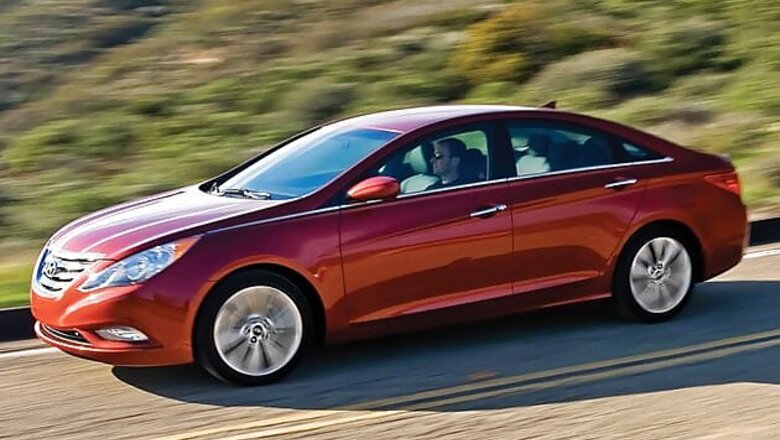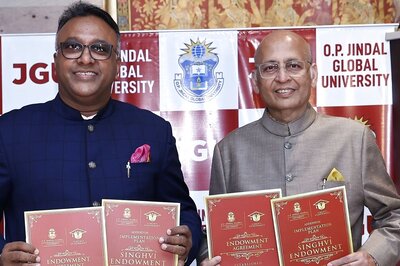
views
Appreciation of car brands depends on where you live. Hyundai has been consistently successful in India but only recently garnered a good reputation in Europe and the United States. In those long-established markets Korean cars had been seen as upstarts with indifferent design, lacking in new technology, and saleable only at the lowest prices.
Hyundai never lacked ambition but it took some time to understand the standards by which Europeans and Americans judge cars. The first signs that it had got the message came when Hyundai and its companion brand Kia launched their first models designed and built in Europe. The Hyundai i30 and Kia Cee'd were a quantum leap from their previous contenders in the hotly-contested C-sector; the Cee'd even made the short list for the 2008 Car of the Year in Europe.
These better cars, plus the downturn in European and US economies that put an emphasis on value-for-money, consolidated Hyundai's position as a major player in the car business. In 2009 Hyundai-Kia overtook Ford to take fourth place in the world sales league.
All of the smaller cars in the Hyundai range have been replaced since then. The i10 and i20 were well received and there is a waiting list in the UK for the i35 compact crossover SUV. Now comes the i40. In terms of positioning, it is probably the most important car yet.
The i40 is a replacement for the Sonata. In Europe, it lines up against the Ford Mondeo, Volkswagen Passat and Opel Insignia; in America, where it is still called Sonata, it competes with the Honda Accord and Toyota Camry, the country's biggest selling passenger cars. The European i40 range started out with the Tourer sportswagon and is only now including the saloon that is sold in the US.
The styling, from Hyundai's studio in Germany, is striking. In pretentious designer-speak it is ‘fluidic sculpture', reflecting waterfalls and sand dunes. Actually, it is a bit fussy but, unlike the old Sonata, the i40 stands out in a crowded car park. It is as if Hyundai wants to show off its new-found maturity, its excellent quality and the i40's state-of-the-art features.
Specifications vary by country, so it may be that Indian market cars will have less equipment than those in Europe, which in the high trim levels, lack for nothing. Sat-nav, LED daytime running lights, cornering lights, park assist with rear-view camera, lane departure warning, panoramic glass roof, heated and ventilated seats, keyless entry - all are available, still with a 3-5 per cent price advantage over similarly-specified cars from Ford, GM or Volkswagen.
For India, the likely choice of power units will be as Europe: four-cylinder direct injection diesel and petrol engines, 115–177PS, with a six-speed manual transmission and a new, compact six-speed automatic optional with the top 136PS diesel. In the US there is a turbo 2-litre petrol engine producing 274PS but that puts the Sonata in a different league.
In the UK, most interest surrounds the i40 Blue Drive, a special low CO2 model which is expected to be popular with company car drivers. Its combined fuel consumption figure – rarely reached in practice – is 23kmpl and its CO2 output of 113g/km is among the very lowest in its class.
The Blue Drive is a good version from which to assess the basics of the i40. It has a 115PS, 1.7-litre CRDi diesel engine, with automatic stop-start and an active radiator flap that aids engine warm-up. It runs on 16-inch alloy wheels (the smallest available) wearing Korean Hankook Kinergy low-rolling resistance tyres.
There is nothing unusual about the chassis – front-wheel drive with MacPherson struts at the front, multi-link rear suspension and an electro-mechanical steering – but like the smaller Hyundais that have been partly developed in Europe, it rides and handles at least as well as the class average.
The steering is lighter than we would ideally like but general road behaviour is good, if not sporty. This lowest-powered diesel engine is notably well insulated, so noise levels are restrained. It gives a reasonable performance (0-100 kmph in 12.5 seconds) and, because Hyundai has resisted using the very high gearing that characterises some economy specials, it feels quite eager in traffic. The Blue Drive's tyres may have low rolling resistance but they are also somewhat lacking in grip; other i40s on 17-inch wheels with conventional tyres inspired more confidence on wet roads. In all cases, electronic stability control and brake assist are there to help.
The i40's cabin is spacious – Hyundai claims the most front-seat room in its class – and the facia design reflects the extrovert exterior. The centre console has some resemblance to that of the latest Ford Fiesta and there is a stylish sweep of brushed aluminium trim below the dashboard. The main thing to notice is the quality of materials and the fit and finish which are so much better than Hyundais of the past.
The cabin can fairly be compared to the Mondeo, Mazda 6 or Skoda Superb. The Mazda is probably the i40's closest direct competitor. In terms of driving dynamics, the Ford is still a better car and the Superb beats Hyundai (and everyone else) in sheer space for people and luggage.
Overall, though, the i40 can hold its own with the best European competition. It is the first Korean car to do so and sets the scene for a massive worldwide expansion for Hyundai-Kia. When the company's vice-chairman said that it would be making 6.3 million cars a year by the end of 2012, it sounded preposterous; now it is looking like a realistic objective.



















Comments
0 comment